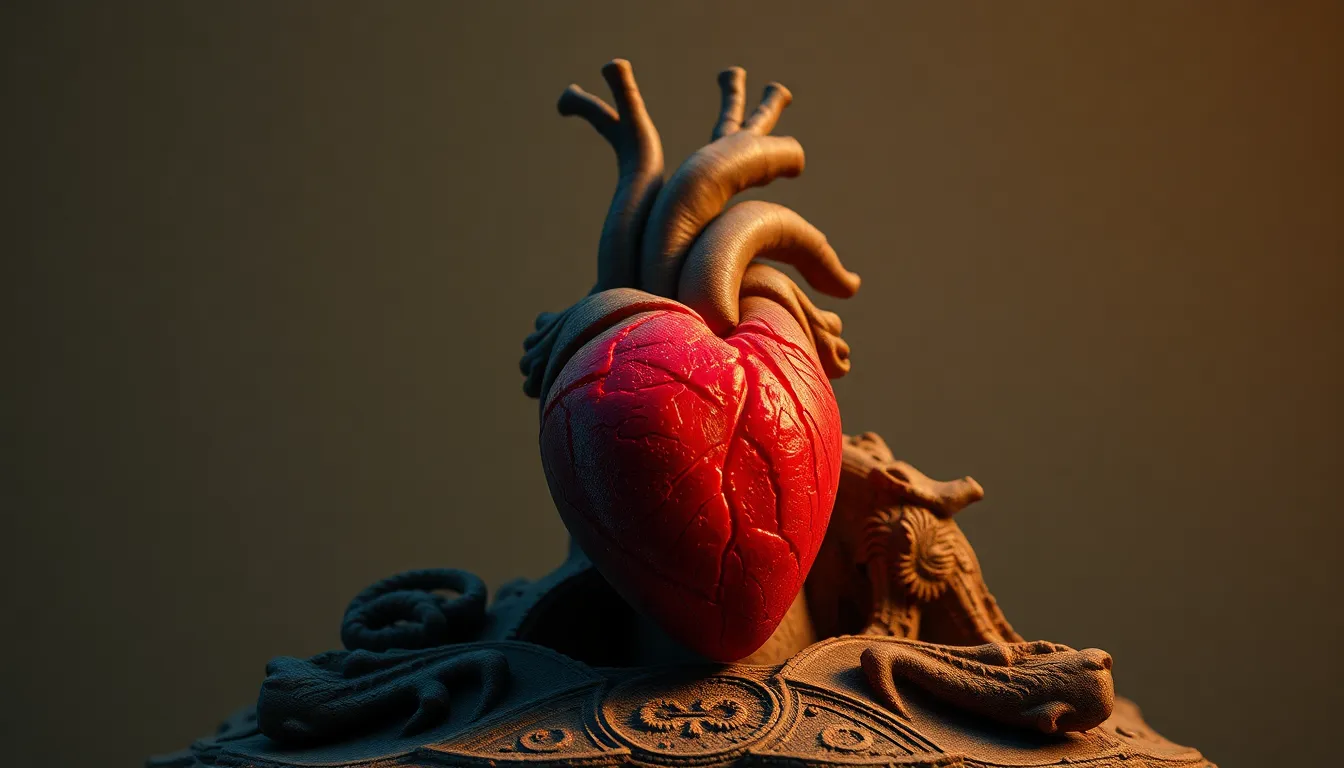The Role of the Heart in Funerary Literature
I. Introduction
Funerary literature refers to a broad category of texts that are composed to honor, commemorate, or assist the deceased in their journey to the afterlife. This genre includes epitaphs, elegies, and religious texts that often reflect cultural beliefs about death and the afterlife. Across various cultures, the heart has been a symbol of profound significance, representing not only the physical organ but also the essence of being, emotion, and memory.
The purpose of this article is to explore the multifaceted role of the heart in funerary literature, emphasizing its symbolism, cultural implications, and the ways in which it connects to broader themes of life, death, and remembrance.
II. Historical Context of Funerary Literature
Throughout history, funerary practices have evolved in response to changing cultural values, religious beliefs, and societal norms. The heart has often been central to these practices, serving as a powerful symbol of life and the afterlife.
- A. Evolution of funerary practices over time: Early civilizations often buried their dead with items they believed would be useful in the afterlife, a practice that has transformed into more elaborate ceremonies and memorials.
- B. Key cultural traditions that emphasize the heart: Various cultures, from the Ancient Egyptians to the Greeks, have emphasized the heart in their funerary texts, viewing it as a vital component in the journey of the soul.
- C. The heart as a symbol of life and death: The heart has been viewed as the seat of emotions, thoughts, and the essence of an individual, making it a critical element in the understanding of mortality.
III. Symbolism of the Heart in Different Cultures
The heart’s symbolism varies across cultures, reflecting differing beliefs about life, death, and the afterlife.
- A. Ancient Egyptian beliefs and the heart’s role in the afterlife: In Ancient Egypt, the heart was considered the “weighing of the heart” against the feather of Ma’at, determining the deceased’s fate in the afterlife.
- B. The heart in Greco-Roman funerary texts: In Greco-Roman traditions, the heart was often mentioned in epitaphs as a symbol of love and longing, reflecting the emotional bonds between the living and the deceased.
- C. Heart symbolism in Eastern philosophies and religions: In Buddhism and Hinduism, the heart represents compassion and the essence of the self, often linked to the cycle of rebirth and spiritual journeys.
IV. The Heart as a Metaphor for Emotion and Memory
The heart serves as a poignant metaphor in funerary literature, encapsulating the emotions associated with love, loss, and remembrance.
- A. How the heart represents love and loss in funerary poetry: Many poets have utilized the heart to express grief and affection for the departed, making it a powerful symbol in elegies.
- B. The heart as a site of remembrance for the deceased: The heart often symbolizes the memories and love that remain after a person has passed away.
- C. Analyzing famous literary works that incorporate heart symbolism: Works such as John Keats’ “Ode to a Nightingale” illustrate the connection between the heart and the themes of mortality and memory.
V. The Heart in Rituals and Practices
Rituals surrounding death often incorporate the heart in meaningful ways, reflecting its significance in various cultures.
- A. Funerary rites involving the heart in various cultures: In some traditions, the heart is removed and preserved as a way to ensure the deceased’s safe passage into the afterlife.
- B. The heart’s role in mourning practices and memorialization: Many cultures have specific rituals focused on the heart, symbolizing the love and connection that persists beyond death.
- C. Case studies of rituals that highlight the heart’s significance: The Maori culture’s practice of preserving the heart of the deceased as a gesture of love and respect illustrates the heart’s enduring importance.
VI. The Heart and the Concept of the Soul
The relationship between the heart and the soul is a profound theme in funerary literature, inviting philosophical exploration.
- A. Philosophical perspectives on the heart and the soul: Various philosophies have posited the heart as a mediator between the physical and spiritual realms.
- B. The heart’s association with spiritual journeys in funerary literature: Texts often depict the heart as guiding the soul on its journey after death, highlighting its significance in spiritual beliefs.
- C. Comparative analysis of soul beliefs and the heart’s symbolism: Different cultures’ views on the soul often intertwine with their understanding of the heart, as seen in the contrast between Western and Eastern philosophies.
VII. Modern Interpretations of the Heart in Funerary Literature
In contemporary society, the representation of the heart in funerary literature continues to evolve, reflecting changing attitudes toward death and remembrance.
- A. Contemporary literature and its portrayal of the heart in death: Modern poets and authors often draw on heart symbolism to explore themes of grief and love in the context of loss.
- B. The influence of social media and digital memorials on heart symbolism: Social media has transformed how people memorialize their loved ones, often incorporating heart imagery in digital tributes.
- C. Shifts in cultural attitudes towards the heart and funerary practices: As cultures evolve, so too do their interpretations of the heart’s role in funerary literature, reflecting broader societal changes.
VIII. Conclusion
In summary, the heart plays a vital role in funerary literature across cultures, serving as a powerful symbol of life, love, and memory. Its significance is evident in historical practices, cultural beliefs, and contemporary interpretations of death and remembrance. As we continue to explore the connections between the heart and funerary literature, we gain deeper insights into the human experience of loss and the enduring bonds that connect us to those who have passed away. Future research may delve further into the evolving significance of the heart in different cultural contexts, as well as its implications for our understanding of mortality and the afterlife.




